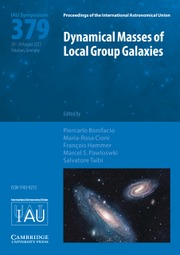No CrossRef data available.
Article contents
Sparse Spatio-Temporal Imaging of Radio Transients
Poster on-line
Published online by Cambridge University Press: 29 August 2019
Abstract
The next-generation radio telescopes such as LOFAR and SKA will give access to high time-resolution and high instantaneous sensitivity that can be exploited to study slow and fast transients over the whole radio window. The search for radio transients in large datasets also represents a new signal-processing challenge requiring efficient and robust signal reconstruction algorithms. Using sparse representations and the general ‘compressed sensing’ framework, we developed a 2D–1D algorithm based on the primal-dual splitting method. We have performed our sparse 2D–1D reconstruction on three-dimensional data sets containing either simulated or real radio transients, at various levels of SNR and integration times. This report presents a summary of the current level of performance of our method.
Information
- Type
- Contributed Papers
- Information
- Proceedings of the International Astronomical Union , Volume 14 , Symposium S339: Southern Horizons in Time-Domain Astronomy , November 2017 , pp. 303 - 306
- Copyright
- © International Astronomical Union 2019
Footnotes
For the full poster, see http://dx.doi.org/10.1017/S1743921318003022

